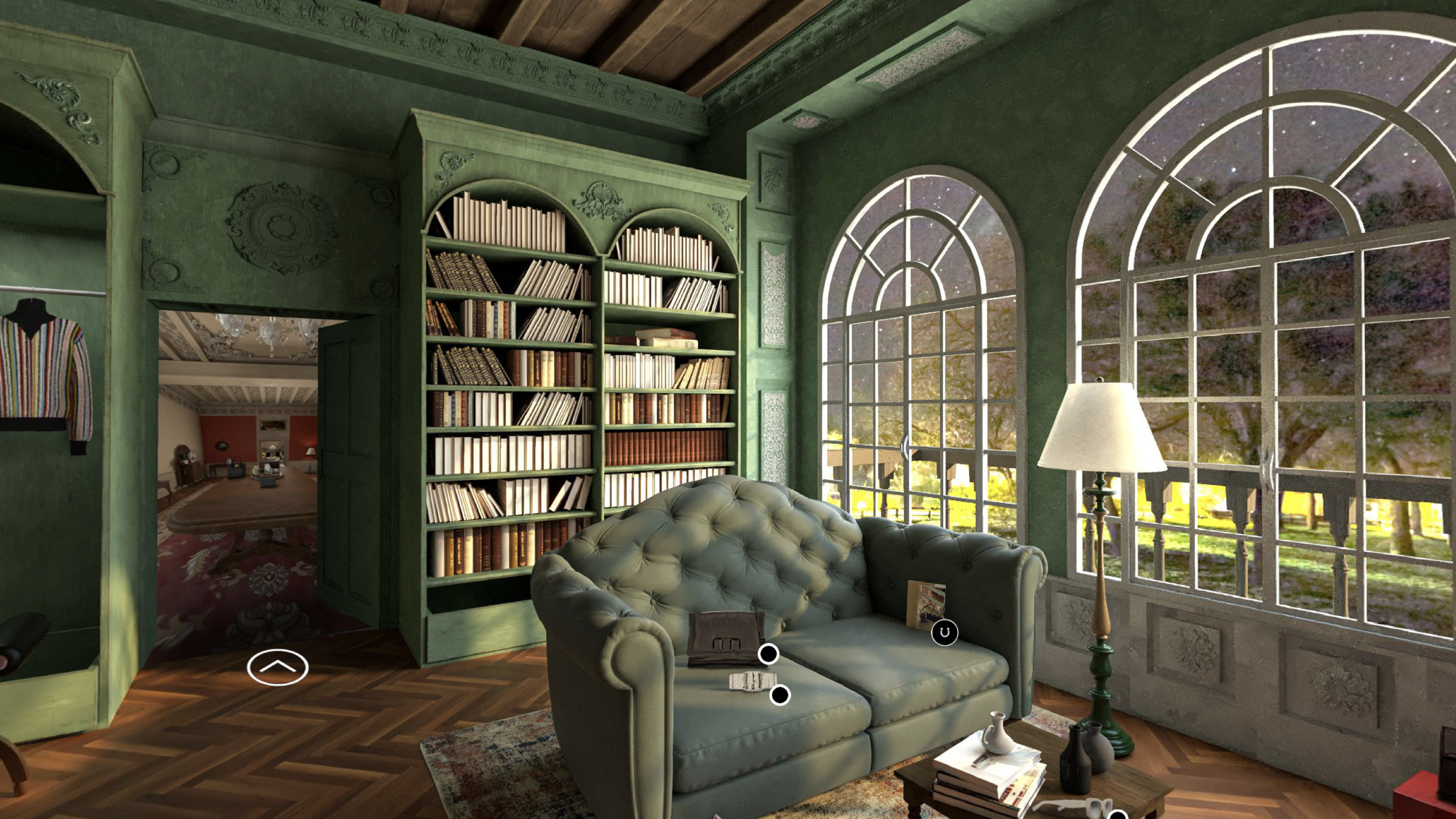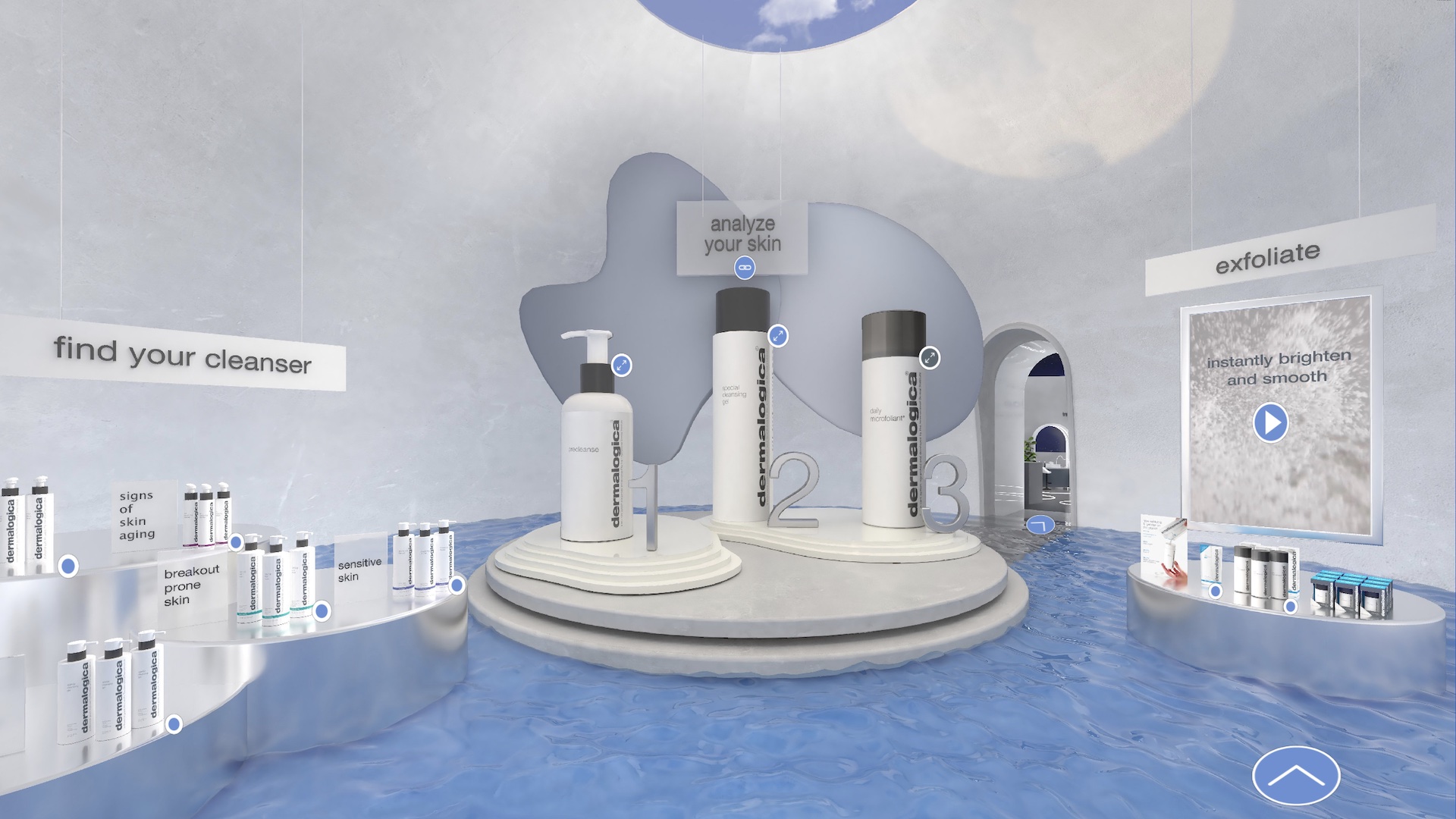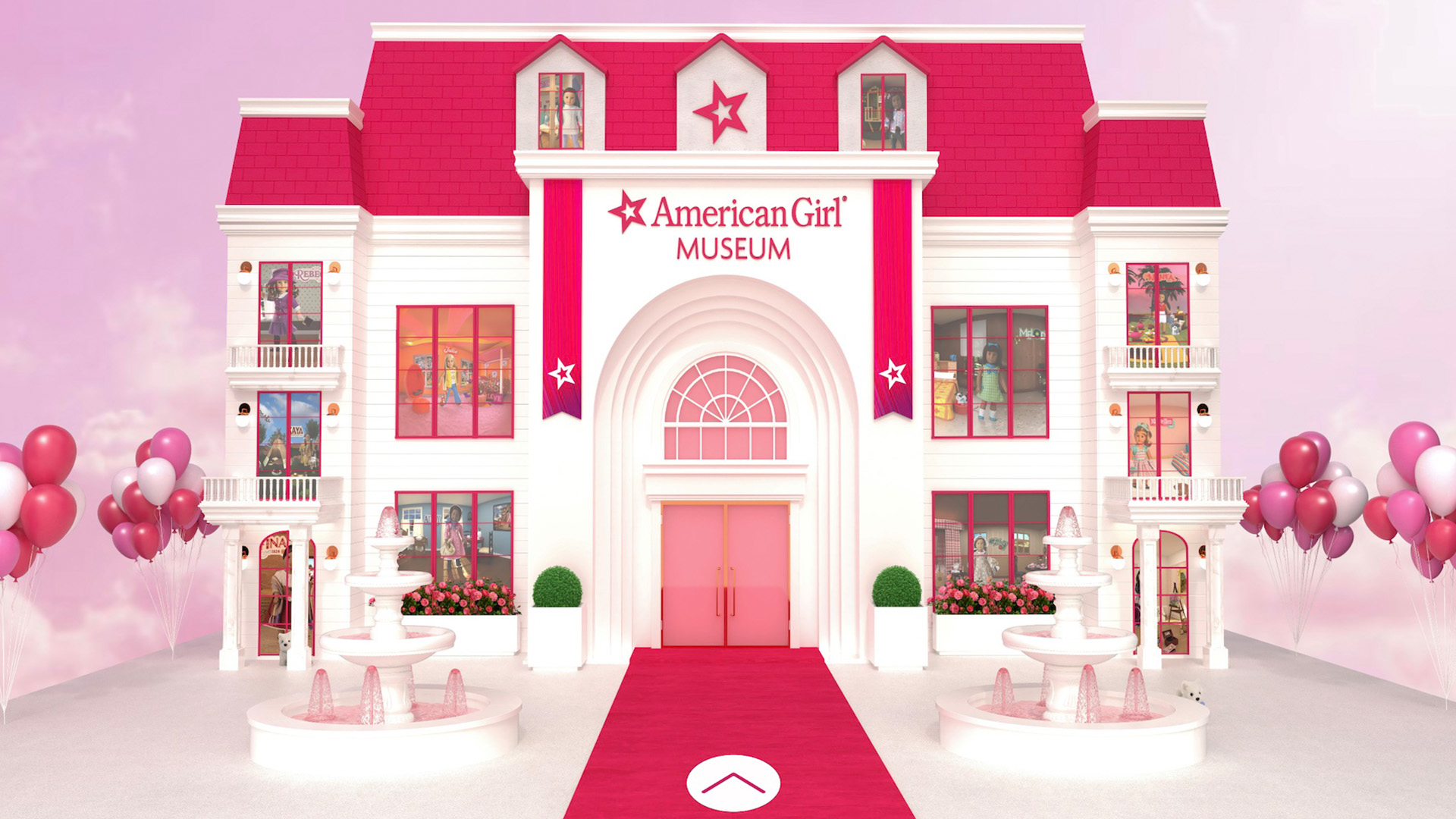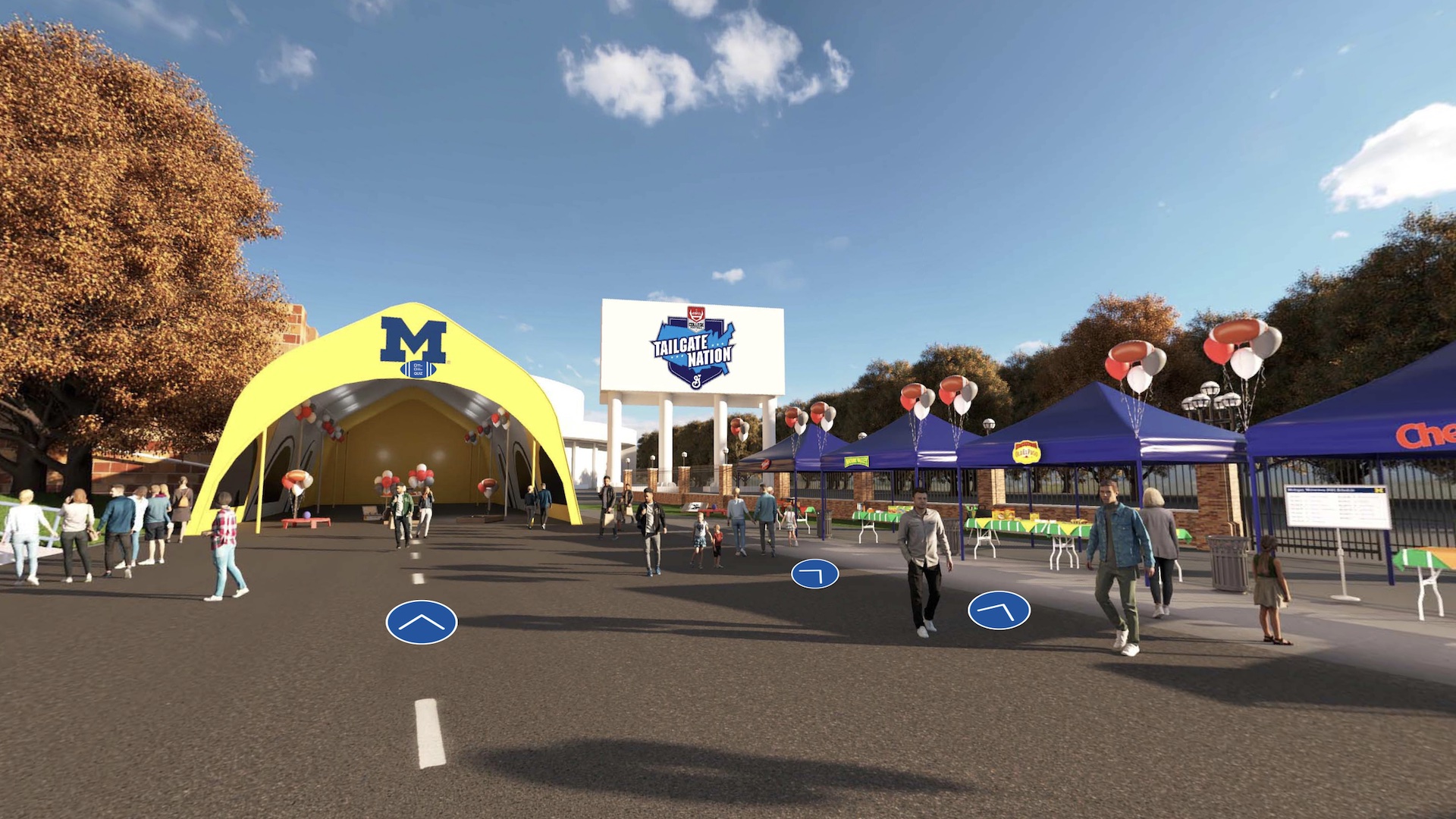The fashion industry is increasingly being held accountable for its impact on the environment. Fashion brands are now reevaluating their methods of operation through a lens of sustainability, as scrutiny increases. In the current climate crisis, brands must make sustainability a priority and strategize accordingly, not only to preserve the environment but to stay relevant.
Shoppers, particularly Millennials and the Gen-Z consumers, expect brands to understand global issues and take responsibility. One way that brands are taking action to align with their customers’ values is by opening Virtual Stores that create a more sustainable method to shop.
The Potential Environmental Impact of Virtual Stores
A virtual store provides customers with a 3D, 360 full-page visual experience that functions as part of a brand’s e-commerce site. Virtual stores are an entry point to the metaverse, a connected, 3D virtual world where consumers are able to interact in real-time with a digital environment through their own personal avatar.
There are currently two ways to create virtual stores: by photographing an existing retail location or by digitally rendering an imagined environment in the virtual world. Ferragamo’s virtual store “House of Gifts” transports the user to an opulent villa, while Fendi takes the user to their trendy NYC 57th St flagship. This format takes online shopping to the next level, allowing users to experience the feeling of visiting their favorite store from the comfort of their home. As users start to opt for metaverse shopping experiences as opposed to physical store shopping experiences, brands can begin facilitating a more positive environmental impact.
Reducing Brands’ Carbon Footprint
Over the years, fashion brands have advanced the in-store shopping experience through innovative and engaging displays. However, these in-store experiences have come with an environmental cost.
Brick-and-mortar stores face the struggle of producing a large number of carbon emissions. The introduction of these complex displays involving a large number of lights and resources can supersize their carbon footprint and can deliver negative consequences to the environment.
Virtual stores can help brands cut environmental harm out of the equation. When a brand creates a virtual store, they can design engaging, beautiful, and innovative displays virtually rather than physically. They also need to open fewer physical retail stores, as more regions can be served virtually. Thus, minimizing their carbon footprint and production waste. Virtual stores give brands the opportunity to be creative and engaging for their consumers, while remaining as sustainable as possible.

Minimizing Shoppers’ Carbon Footprint
Virtual stores can help lower shoppers’ carbon footprint as well. In order to visit physical stores, the majority of shoppers still rely on modes of transportation that are harmful to the environment. By moving stores to the metaverse, shoppers simply need to log onto their computer to visit their favorite store rather than drive or use public transportation. The store is at their fingertips.
Another big source of carbon emission in the retail industry is shipping and returns. If a shopper orders something online and then returns it due to poor fit, this can further amplify pollution as the item is shipped back to the store’s inventory. How well or poorly a clothing item fits according to a shopper’s online purchase can ultimately have an adverse impact on the environment.
Furthermore, online shopping allows users to order multiple sizes and variations of an item to decide which they like best. Using the promise of free returns, they can send any items they don’t want back to the retailer. However, practices like these can further increase transportation negatively impacting the environment.
Virtual stores have implemented tools to help users mitigate the frequency of returns. More accurate sizing charts and the use of augmented reality to virtually try on pieces can reduce the volume of returns and their subsequent negative effect on the environment. With fewer incoming and outgoing shipments, virtual stores can be a great way for shoppers to improve their carbon footprint.
Saving on Supply Chain
Brands continually run into the issue of producing more inventory than ends up selling. When there is excess inventory, brands often take the route of selling the product to discount stores, which impacts brand image. To avoid discounting items, luxury brands have sometimes taken a disastrous path and have resorted to destroying products. This has led to backlash from allegations of burning unsold inventory. Finished good destruction is almost ubiquitous in the luxury fashion industry, despite sustainability teams trying to put an end to the practice. Vogue Business, in the article “Why destroying products is still an ‘Everest of a Problem’ for fashion,” notes,
“In an industry that has only recently begun to incorporate environmental impacts into its business decisions, the practice of destroying unused products has long been a norm for brands. For luxury brands, destroying unsold products also ensures brand value is retained. The problem has been exacerbated by an increase in product returns tied to the rise of online sales. Returned items can be tricky to resell because many businesses are not equipped with the necessary infrastructure or technological capacity — they can easily end up as discards.”
With virtual stores, many brands are now designing and showcasing their products virtually, before physically producing the items. Brands can gain data on the demand for their products through virtual item pre-orders and then produce only as much inventory as is needed. The result is an enormous saving on the supply chain and avoiding harmful practices such as destroying inventory.

Conclusion
Virtual stores can help brands and the retail industry make a positive impact on climate change. By minimizing not only their own carbon footprint but also helping to reduce shoppers’ footprint, virtual stores help brands become more environmentally friendly. Virtual stores can also create a more inclusive and accessible experience for shoppers, regardless of social and physical variables.
Though of course, this is not an end-all for problems of sustainability. The fashion industry will likely continue to struggle with how to combat the burning of fossil fuels as a result of its supply chain operations. There is no quick fix, but shifting physical shopping activities to the metaverse via a virtual store can be one of the steps.
Consumers want to see that brands care. They want to know that the brands they are shopping with have the same values as them, and care about the environment. Learn more about how your brand can lead the way in providing a more sustainable way to shop, with virtual stores in the metaverse.





